

Quality Inspection Standards for Airless Bottles
Airless bottles, airless jars, and airless pumps have become essential components of modern cosmetic and packaging due to their advanced technology that preserves product quality, enhances user experience, and supports sustainability. These innovative containers offer a high degree of functionality by preventing air from contaminating the contents, which ensures longer shelf life and protects sensitive formulations. However, for these airless packaging solutions to perform optimally, they must undergo strict quality inspections. This article delves into the various quality inspection standards required to ensure that airless packaging meets the necessary criteria for both aesthetics and functionality. Topics covered include appearance quality, structural integrity, functional performance, advanced testing techniques, and eco-friendly considerations.
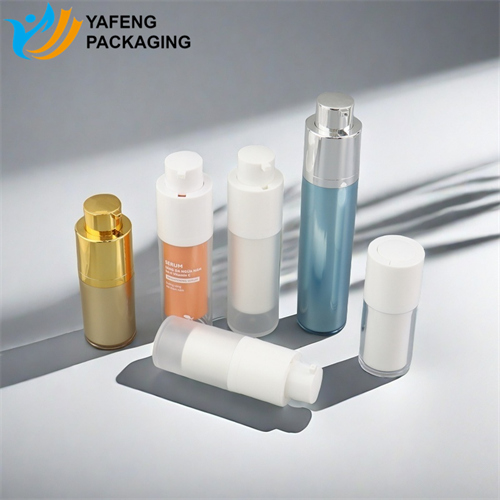
Airless bottles are designed to protect the contents from exposure to air, preserving the integrity of sensitive cosmetic products such as s, s, and s. Unlike traditional bottles, airless packaging features a piston or pump mechanism that pushes the product upwards, dispensing it without introducing any air into the container. This air-tight design minimizes the risk of oxidation and contamination, ensuring that the product remains fresh for longer.
Airless packaging comes in a variety of designs, each suited to different product formulations and consumer needs:
Airless Bottles: Ideal for liquid formulations like serums, lotions, and facial oils. These bottles dispense precise amounts of product without waste, providing a clean and controlled delivery system.
Airless Jars: Often used for thicker products like creams, masks, or balms, these jars also maintain hygienic conditions by preventing exposure to air and contaminants.
Airless Pumps: Commonly found in both bottles and jars, airless pumps allow smooth dispensing without leakage or contamination, ensuring consistent performance.
As sustainability becomes increasingly important to consumers, manufacturers have begun to adopt more environmentally friendly practices. Eco-conscious airless packaging designs often incorporate recyclable materials such as PET or PP plastics, as well as refillable components, to reduce waste and support circular economies.
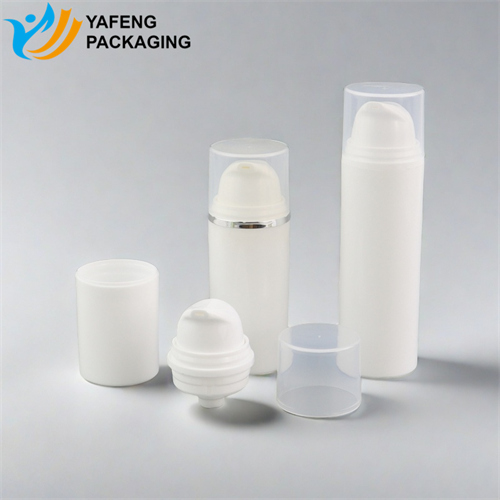
Quality control (QC) for airless bottles, jars, and pumps is essential to ensure that the packaging maintains its functionality, integrity, and aesthetic appeal throughout its lifecycle. Rigorous QC processes guarantee that manufacturers deliver a product that meets consumer expectations and regulatory standards.
Some of the key benefits of a robust quality inspection process include:
Maintaining Brand Reputation: Consistent quality helps to enhance brand credibility and trust among consumers.
Product Safety: Ensuring that the packaging performs as expected reduces the risk of contamination or product degradation.
Reducing Waste: Effective QC helps identify defects early, minimizing waste and avoiding returns or recalls.
Supporting Sustainability: High-quality airless packaging often includes sustainable materials and designs, helping brands align with eco-friendly goals.
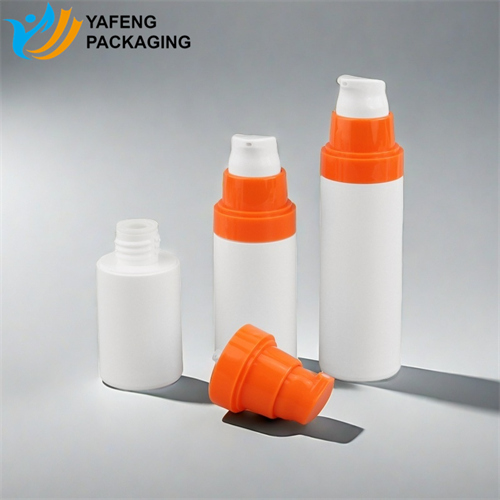
Airless bottles must meet strict appearance standards to ensure they provide a visually appealing and functional package for the consumer.
Smoothness: All surfaces should be free of defects like scratches, dents, cracks, or other blemishes.
Clarity: Transparent airless bottles must exhibit high clarity, without fogging or discoloration, which could impair visibility and product appeal.
Sharpness and Legibility: Logos, text, and graphic designs must be clear and aligned correctly.
Durability of Coatings: Hot-stamped or screen-printed decorations should withstand routine use without fading or peeling.
Matching Approved Samples: Color variation between production batches must remain within defined tolerances.
Cohesive Design: Airless pumps and jar lids should complement the overall design of the bottle or jar to create a visually consistent and attractive package.
Airless bottles must also meet structural standards to ensure functionality and durability.
| Critical Dimensions | Tolerance |
|---|---|
| Pump Fittings | ±0.5 mm |
| Bottle Neck Threads | ±0.5 mm |
| Bottle Height/ Diameter | ±1.0 mm |
Critical Dimensions: Tolerances for pump fittings, bottle neck threads, and sealing components should be precise to prevent misalignment and leaks.
Size Variations: No significant size variations in bottle height or diameter are allowed, with tolerances generally set at ±1.0 mm.
Smooth Assembly: All components, including pumps, caps, and inner parts, must assemble seamlessly with no excessive force required.
Alignment: Misalignments or gaps between components are unacceptable and should be corrected before packaging.
Drop Tests: Airless packaging must withstand impacts from drops from standard heights (e.g., 1.2–1.5 meters) without cracking, leaking, or losing functionality.
Functional testing is critical to ensure that the packaging operates as expected throughout its lifecycle.
Efficient Dispensing: Pumps should dispense the product smoothly with a consistent volume. The initial discharge should be achieved within 10 presses for thicker formulations and 8 presses for thinner ones.
Spray Volume Consistency: Spray volume should not deviate more than ±10% from the expected output.
Leak-Proof Testing: Airless packaging must pass vacuum tests to ensure that the product remains sealed under conditions of -0.06 MPa.
Piston and Gasket Integrity: The pistons and gaskets should maintain their sealing function throughout the usage and storage phases.
| Test Type | Criteria |
|---|---|
| High-Temperature Endurance | Product must withstand +50°C for 24 hours without deformation or leakage. |
| Low-Temperature Endurance | Product must withstand -10°C for 24 hours without cracking or deformation. |
High-Temperature Testing: Products must withstand temperatures of up to 50°C for 24 hours without showing any signs of deformation, leakage, or failure.
Low-Temperature Testing: Airless packaging should also remain intact when exposed to temperatures as low as -10°C for extended periods.
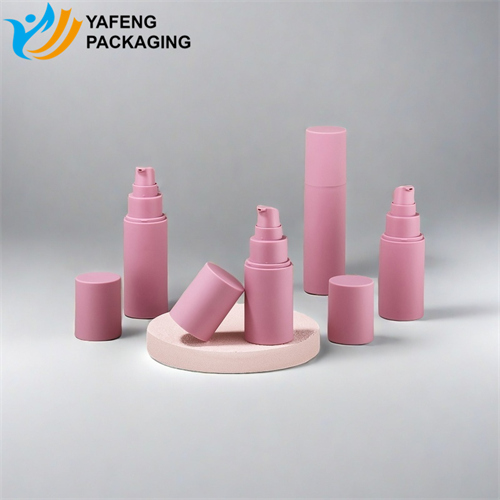
To ensure the highest level of product quality, several advanced testing methods are employed. These techniques evaluate durability, material integrity, and performance under various conditions.
Alcohol Wipe Test: Printed graphics and hot-stamped areas are tested for durability by rubbing with alcohol-soaked gauze.
Adhesion Test: Coatings on airless bottles are tested for adhesion using 3M tape to ensure that decorations do not peel or fade.
Transparent airless bottles undergo light transmission tests to check for optical clarity and the absence of discoloration.
Bottles are filled with water and subjected to simulated use conditions (e.g., vacuum testing) to detect any leaks or air ingress.
Eco-friendly airless packaging is evaluated for material recyclability, refill efficiency, and environmental impact. Manufacturers are encouraged to use biodegradable plastics, sustainable materials, and refillable systems to promote sustainability.
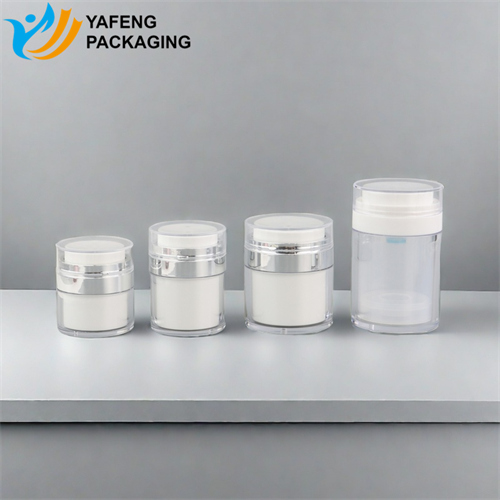
With growing consumer demand for sustainable packaging, the airless packaging industry is increasingly incorporating eco-friendly designs. Several trends are shaping this shift toward more sustainable airless packaging solutions:
Many manufacturers are opting for recyclable plastics, such as PET and PP, to produce airless bottles and jars. This approach supports the reduction of plastic waste and the promotion of recycling programs.
Refillable airless jars and bottles are gaining popularity as they reduce single-use plastic waste and encourage reuse. These systems often feature replaceable inserts, which can be refilled with the same product or a different formulation.
Emerging technologies are introducing biodegradable plastics into airless packaging designs. These materials can decompose naturally, reducing environmental impact without compromising functionality.
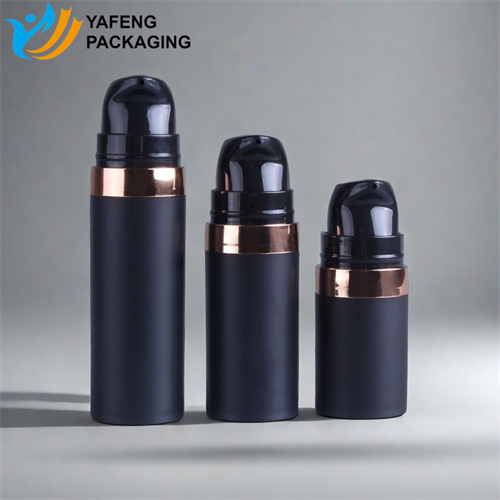
Despite their many advantages, airless bottles pose several unique challenges during production and inspection.
The complex piston and pump systems require high-precision molding and assembly processes to ensure that the components fit together correctly and operate smoothly.
Airless packaging must be made from materials that are compatible with the product inside. The plastics used must resist degradation from product ingredients while maintaining their eco-friendly credentials.
Manufacturers face challenges in balancing cost-effectiveness with sustainable practices. High-quality, eco-friendly materials often come with a higher cost, which can impact product pricing and affordability.
Airless bottles, jars, and pumps represent a significant advancement in cosmetic packaging, offering advantages such as preserving product integrity, minimizing contamination, and extending shelf life. However, for these packaging solutions to deliver on their promises, strict quality control and inspection standards must be adhered to. By ensuring high-quality manufacturing practices, maintaining aesthetic and functional integrity, and embracing sustainable materials, manufacturers can produce airless packaging that meets the needs of both consumers and brands.
Q1: How do airless bottles preserve product integrity?
Airless bottles utilize a piston mechanism that pushes the product upwards without introducing air, thus preventing oxidation and contamination.
Q2: What are the main types of airless packaging?
The main types of airless packaging include airless bottles, airless jars, and airless pumps. Each design serves a different function and is suited to specific types of cosmetic formulations.
Q3: What testing is involved in ensuring the durability of airless packaging?
Airless packaging undergoes several tests, including drop tests, sealing tests, adhesion tests, and environmental endurance tests to ensure durability and performance under different conditions.
Q4: What is the role of eco-friendly packaging in airless bottle design?
Eco-friendly packaging focuses on using recyclable and biodegradable materials, refillable designs, and minimizing plastic waste to align with consumer sustainability preferences.





